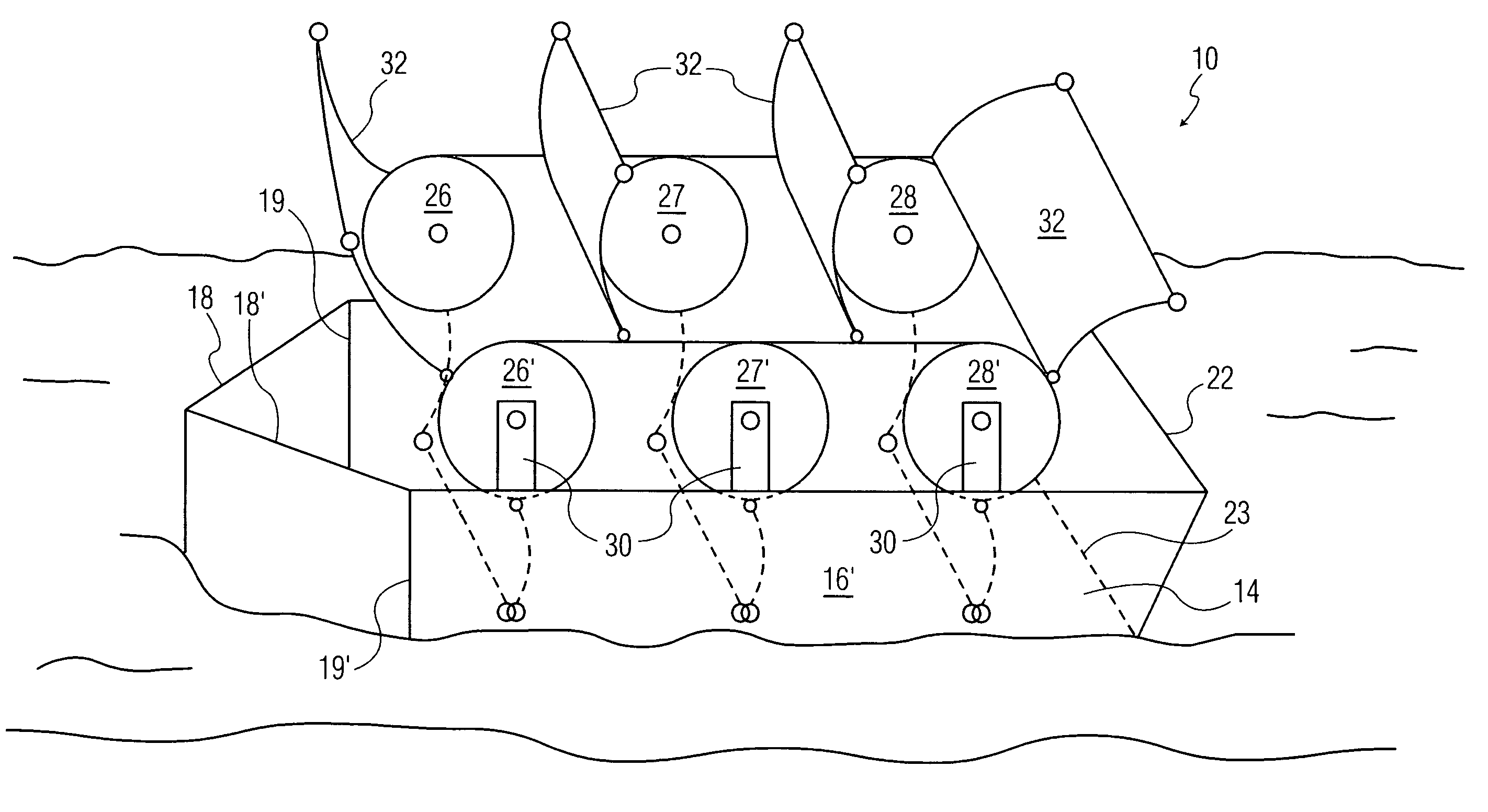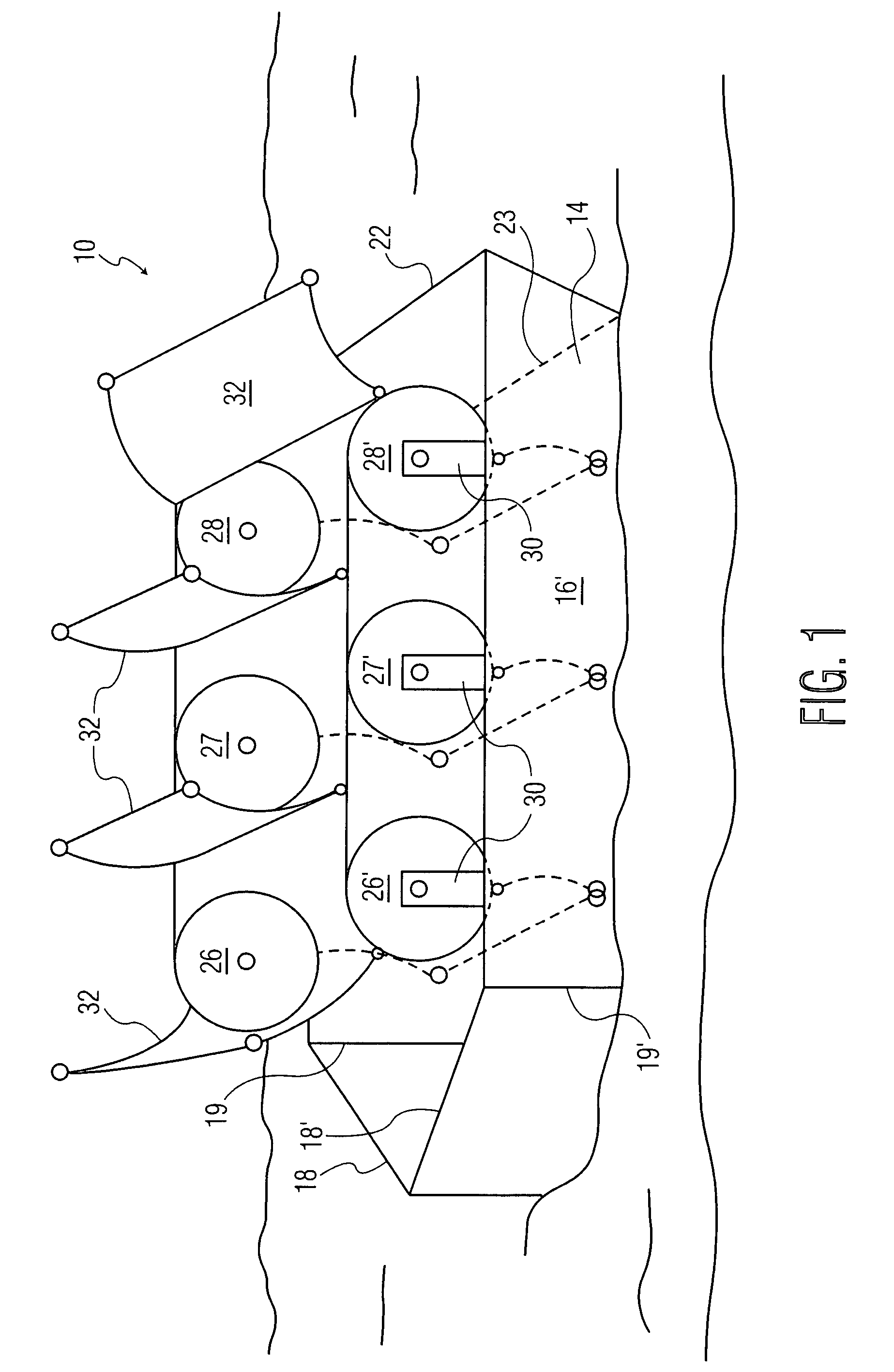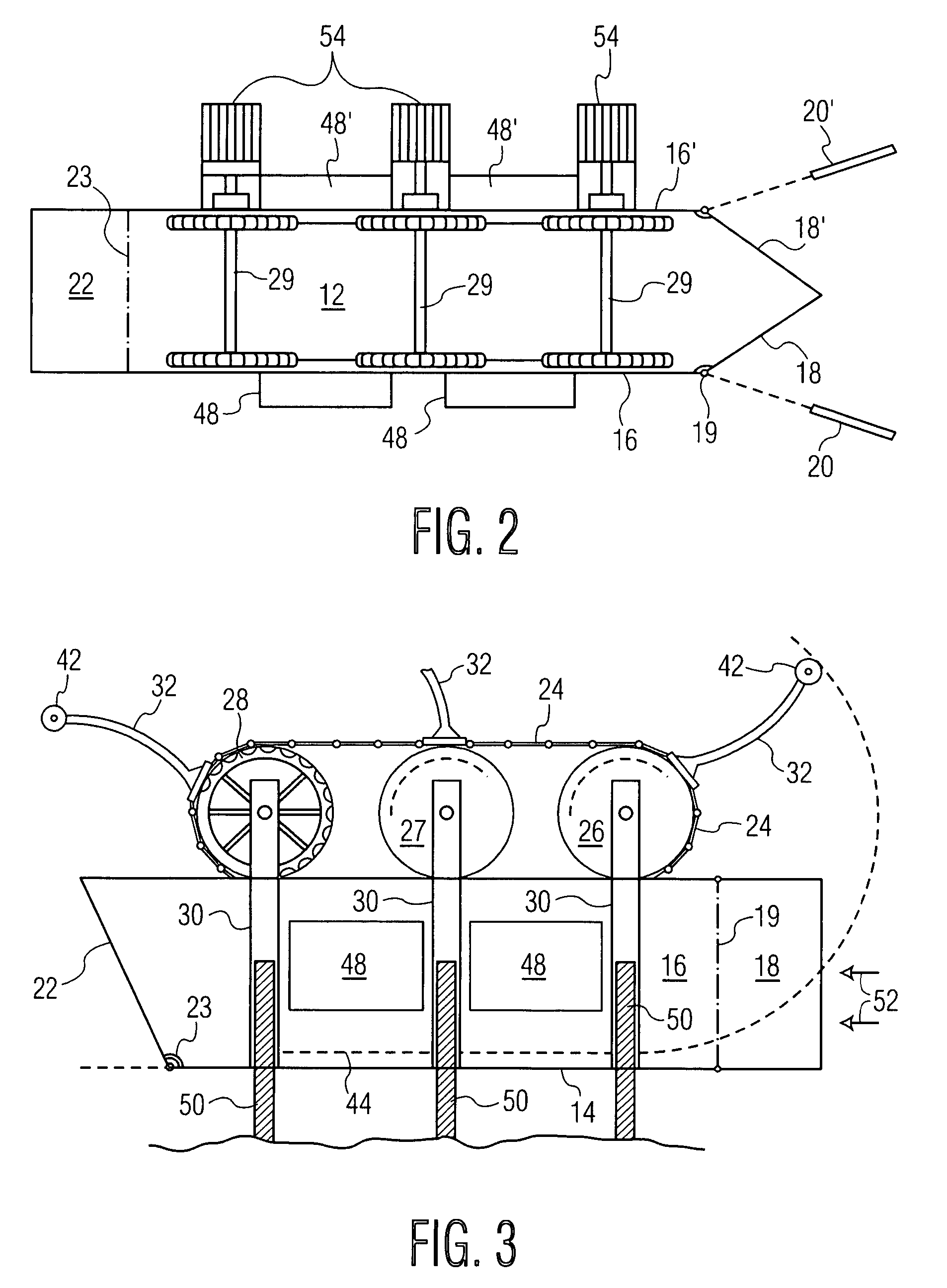Method and apparatus for retrieving energy from a flowing stream of water
a technology of water flowing and energy retrieval, applied in the direction of electric generator control, vessel construction, marine propulsion, etc., can solve the problems of limiting the amount of power that can be generated, the width of the channel is somewhat limited, and the structure cannot be moved from one location to another, so as to achieve the effect of convenient movemen
- Summary
- Abstract
- Description
- Claims
- Application Information
AI Technical Summary
Benefits of technology
Problems solved by technology
Method used
Image
Examples
Embodiment Construction
[0024]The preferred embodiments of the present invention will now be described with reference to FIGS. 1–6 of the drawings. Identical elements in the various figures are designated with the same reference numerals.
[0025]The preferred embodiment of the mobile apparatus for retrieving energy from a flowing stream of water is illustrated in FIGS. 1–3 of the drawings. As is shown there, the apparatus comprises a boat 10 having an elongate hull 12 formed by a flat, horizontal bottom 14 and two upright, flat sides 16 and 16′ on starboard and port, respectively. The bow or prow of the boat is formed by two upright flat members 18, 18′ arranged in an inverted (upside down) V configuration. These members are hinged to the sides of the hull 16, 16′, respectively, about substantially vertical hinge lines 19, 19′, respectively. The hinged members 18, 18′ are sealed together at the prow and sealed to the bottom 14 of the boat when they are in a closed position. During operation, these members ma...
PUM
 Login to View More
Login to View More Abstract
Description
Claims
Application Information
 Login to View More
Login to View More - R&D
- Intellectual Property
- Life Sciences
- Materials
- Tech Scout
- Unparalleled Data Quality
- Higher Quality Content
- 60% Fewer Hallucinations
Browse by: Latest US Patents, China's latest patents, Technical Efficacy Thesaurus, Application Domain, Technology Topic, Popular Technical Reports.
© 2025 PatSnap. All rights reserved.Legal|Privacy policy|Modern Slavery Act Transparency Statement|Sitemap|About US| Contact US: help@patsnap.com



